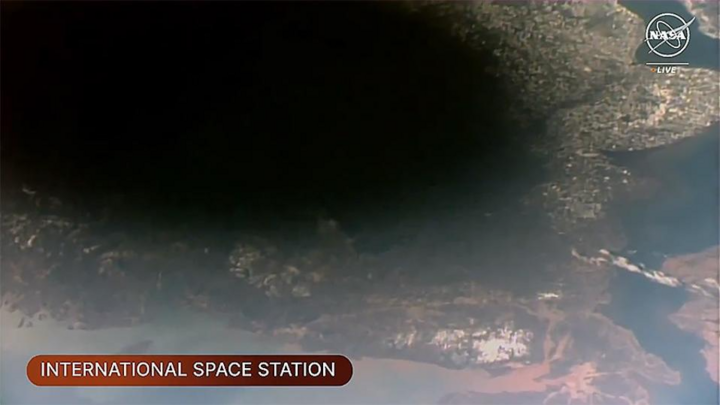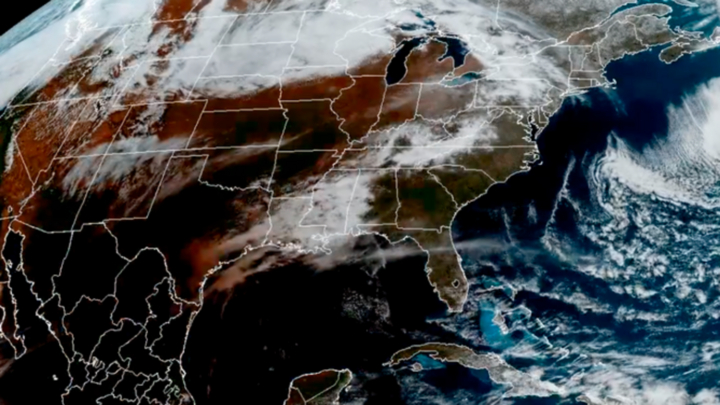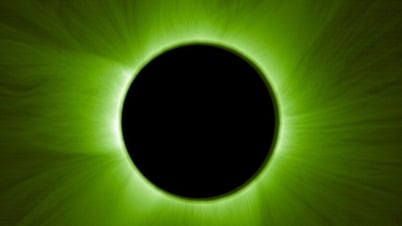During a total solar eclipse, the Moon will block out the Sun, leaving only the bright corona. However, that is the view from Earth, but for astronauts on the International Space Station (ISS), what they see is a spectacular sight: the Moon's giant shadow on the Earth's surface, gradually moving across North America.

The giant shadow the Moon casts on Earth during a total solar eclipse. (Photo: NASA).
At the time of the eclipse, astronauts on the International Space Station (ISS) at an altitude of 418 km above the ground were there at the right time to record the above image. In addition, the US GOES weather and environmental satellite also recorded the moment the dark shadow (umbra) of the Moon appeared on Earth.

The shadow cast by the Moon was captured by satellite. (Photo: NOAA).
The eclipse image from the ISS was no accident. NASA had been adjusting its orbital altitude for months, calculating how the space station would see this eclipse and the next one in North America in two decades. The result is a historic image of the moon’s shadow moving from New York State to Newfoundland from 260 miles above southeastern Canada. The image was taken through the ISS dome by two NASA flight engineers, Matthew Dominick and Jeanette Epps.
Although the ISS passed over North America during the total solar eclipse, it was only visible as a white dot moving very quickly across the sky, reflecting off the station's solar panels.
In addition to helping eclipse-watchers find a cloud-free spot in its path, the GOES-East (CONUS) satellite also captures interesting images of the Moon's shadow. The satellite is located more than 35,000 km above the Earth's equator and moves at the same speed as the planet's rotation, allowing it to "stay" in the same spot on the Earth's surface. That's why it's called a geostationary satellite.
Satellites also observed a decrease in the Earth's surface temperature in the Moon's umbra during a solar eclipse due to the reduced amount of sunlight reaching the ground.
The recent total solar eclipse was the longest in North America in more than 200 years, lasting 4 minutes and 26 seconds, second only to the 4 minutes and 48 seconds in 1806.
The next total solar eclipse in North America will be on March 30, 2033, in Alaska. The next total solar eclipse in the continental United States (excluding Alaska) will be on August 23, 2044, in Montana and South Dakota. Just one lunar year later, on August 12, 2045, a total solar eclipse will pass through 12 US states, from California to Florida.
Source













































































































Comment (0)